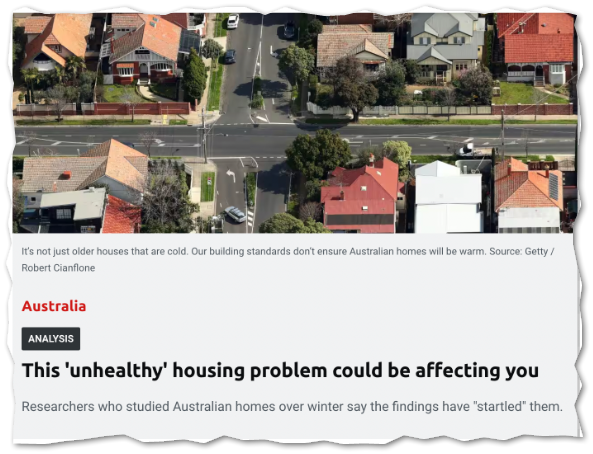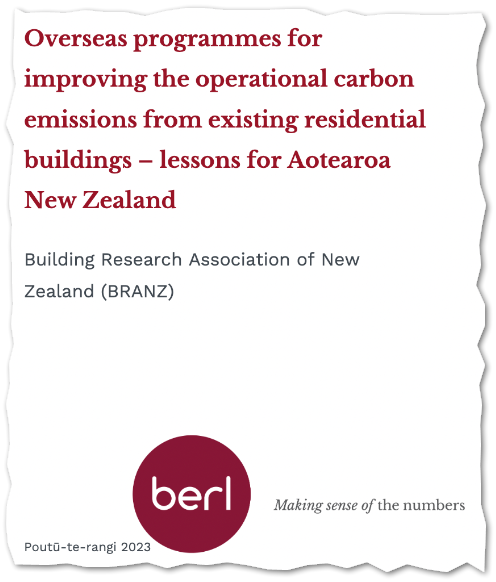Energy modelling New Zealand homes at design stage is easier and more widely available, thanks to a project by Sustainable Engineering for the New Zealand Green Building Council (NZGBC). ECCHO has been accredited under ASHRAE 140, a confirmation that ECCHO’s calculations are correct. This work was carried out by SEL principal, Jason Quinn. ECCHO had to be validated in order …
Australian homes aren’t warm either

Australia is much warmer than New Zealand but apparently not inside their homes in winter. This new study points out that 80% (!) of the Australian homes measured failed to meet WHO recommendations for minimum indoor temperatures. We know from our own issues here in New Zealand that cold equals mould and poor health. The problem of cold homes isn’t …
Economic benefits to extensive housing retrofits

Large-scale retrofit programmes to improve New Zealand housing would generate huge benefits, according to a recent report by BERL: $50 billion in health and energy savings and over $116 billion in broader well-being benefits, depending on the level of investment in retrofitting homes. The report examined international retrofit projects and investigated the economic impacts of a large scale programme. Three …
Embodied carbon tools from NZ Green Building Council
The NZ Green Building Council undertook detailed consultation into what its clients needed to assess embodied carbon. It has released a suite of tools to assist with measuring, verifying and comparing embodied emissions in new buildings and major refurbishments. “The built environment, including infrastructure, contributes 20% of New Zealand’s emissions,” it notes on the release page. “Reducing embodied carbon is …
Q&A with Jason: explain heating load vs demand
Q. What is the difference between heating demand and heating load and how is each measured? How do these numbers impact on Passive House certification? A. Both these numbers are important. Passive House certification sets an upper limit for both these metrics: breach both and you’ll miss out on certification. However, the point of measuring these two things is to …
“The most sustainable house is the one you don’t build”

New Zealanders have a vast job ahead retrofitting existing housing stock. Massively improving the thermal performance and energy efficiency of existing residential buildings is not optional if we are to meet our carbon emissions reduction commitments. Work in progress by architect and Passive House designer Murray Robertson is highlighting the feasibility of deep retrofits to particular types of New Zealand …
Your clients must own the risk that goes with cost-cutting
How is risk allocated in the design of new buildings? Who benefits and who pays for it? This is at the crux of some very interesting conversations I’ve been having recently with designers and engineers on multiple projects. Sustainable Engineering has recommended particular solutions that carry almost no-risk. Yet the client doesn’t want to pay for best practice solutions and …
The slow switch to ISO standards in NZBC
New Zealand is slowly switching over to using ISO standards, at least for our building energy work and code in H1. The revised H1 switches to the following standards, so far: ISO10211, ISO10077-1/2 ISO13370 I expect that someday we will replace NZS4214 with ISO6946. I also suggest we explore adopting ISO standards under the “The Energy Performance of Buildings Directive …
Least cost, most benefit from jumping straight to Passive House performance
Something I learned from my dad growing up was to do something right … so you only had to do it once. When you do a half-arsed job, you often have to do it over again. I was reminded of this when Jonathan Holmes (VIA Architects) recently pointed out a great technical paper from the UK. It dates back from …
